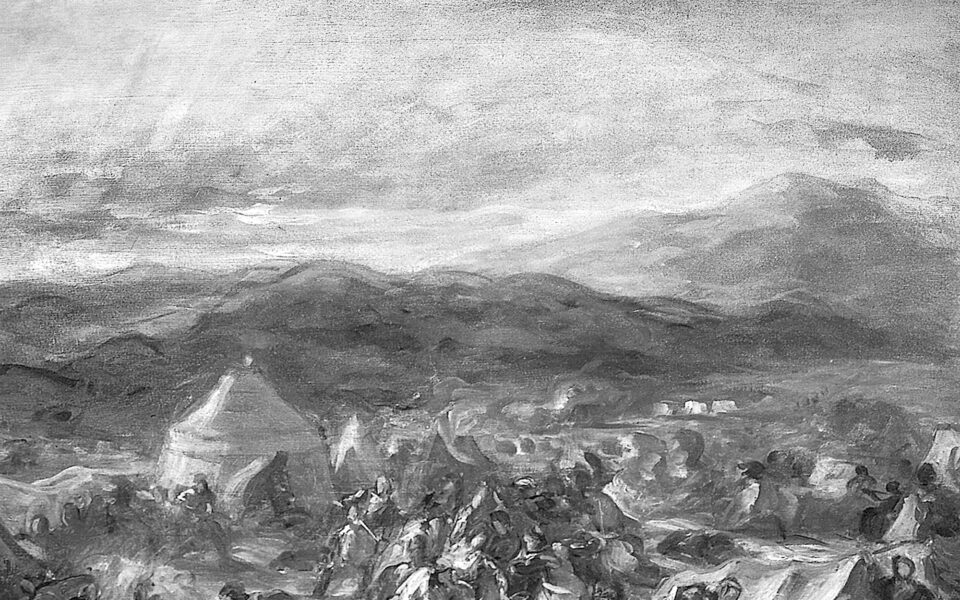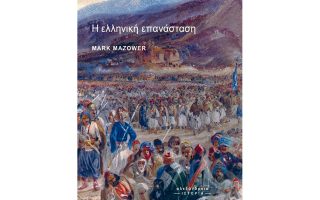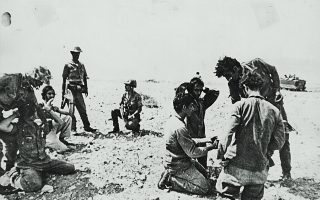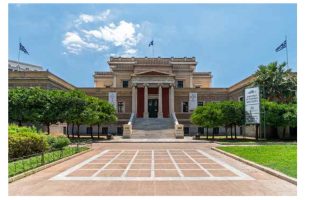The Noblest Cause
Aristides Hatzis’ book combines historical account with literary approach to Greek Revolution

There are two reasons why “The Noblest Cause: The 1821 Greek War of Independence” is an accomplishment: the volume of information inside and the passion for 1821 infused by Aristides Hatzis, an “outsider” in the land of “history.” The reader is simultaneously reading two books: a historical work that analyzes sources and events, and a work of literature that records feelings and moral dilemmas. This chiaroscuro is elevated in the analysis of its two clashing protagonists, Ioannis Kapodistrias and Alexandros Mavrokordatos – in other words the competition between Russian and British influence.
The book records in detail the wariness of Kapodistrias, a result of his internal knowledge of Russian ambivalence, echoing the vindicated belief that the Greek Revolution could only succeed through an Anglo-Russian compromise. In reality, Kapodistrias worked toward averting a Russo-Turkish war that would harm it. It is with this mind-set that he stayed away from the internal affairs of the Revolution between 1822 and 1827, forging a friendship with British Foreign Secretary George Canning. When Canning died in 1827, just before the Battle of Navarino, and a Russo-Turkish war did end up breaking out (1828-29), it marked the beginning of the end for Kapodistrias.
Examining Kapodistrias brings Alexandros Mavrokordatos to the fore. Mavrokordatos is treated more unfairly by Greek history writers despite his decisive contribution to the fruition of the Revolution at a young age (being just 30 in 1821). He was the leader of the English Party, he laid the groundwork for the Greek Revolution in the British Empire (“the world’s most powerful nation at the time,” notes the author), and would later become the country’s de facto leader.
Mavrokordatos stands out in the paintings of the era in his Western garb, standing among his compatriots adorned in luxurious Greek clothing. He changed his visage to emphasize a political goal: Greece would only be free if it was part of the “West,” and not just an unequivocally Christian nation sheltering in the embrace of same-faith Russia. Truly, Greece’s Western orientation has continued to define the country almost continuously to this day.
Hatzis gives prominence to the important role of the “pencil-pushers.” Without detracting from the contribution of the military and political leaders, he contributes to our understanding of the Revolution as a complete break from the past, spiritually, politically, ideologically, and not just militarily. The bicentenary in 2021 helped us break free from the traditional historiographical approach of focusing on the military narrative, which is more a reflection of the historical periods in which seminal works were compiled. With respect to historical methodology, Hatzis sets out modern questions while giving yesterday’s answers rooted in the past and the people who lived it. The chapter titles are emotive. As an example, nothing can truly capture the experience of those on board the Aegean’s fire ships as well as the words Konstantinos Kanaris used to mutter before every attack: “Konstanti, you are going to die!”
Another “voice” of the past featured in the book is that of the Filiki Etairia (“Society of Friends”). The author shows how good ideas, and the right people, are not enough. To achieve results, you need a political institution that can organize specific goals and maintain cohesion. The Filiki Etairia orchestrated the revolutionary spirit of the time, the Enlightenment, lessons from previous failed revolts (like the Orlov Revolt of 1770), the wealth of the shipowners, the experience of the military leaders, the connections of the Phanariotes, the influence of the potentates, the despair of the villagers, the mutual distrust between the Great Powers. It remains impressive that all the different and clashing groups of Greeks fought back-to-back for independence, united by a common national consciousness, even though they often had individual differences dividing them. This rapid organization partially helps explain the “civil wars” that broke out later over issues that remained unsolved, including the form any future government would assume and the rule of law.
The book is a reflection of the author’s liberalism. Hatzis is a known liberal, without the dogmatism of liberalism, for every -ism includes dogmatism, even when it is in the name of freedom. However, as history has proven, the liberalism of 1821 would be weak without nationalism. It would have been unable to last long politically or win battles on the field. National wars are what supported liberal governments. The national anthems of Europe’s states today remain bloody nationalist poems.
The “The Noblest Cause” stops at 1823, the point between early military victories and civil war. For what comes later we will have to wait for Book II.
Konstantina Botsiou is a professor of history and international relations in the Department of International and European Studies at the University of Piraeus.





